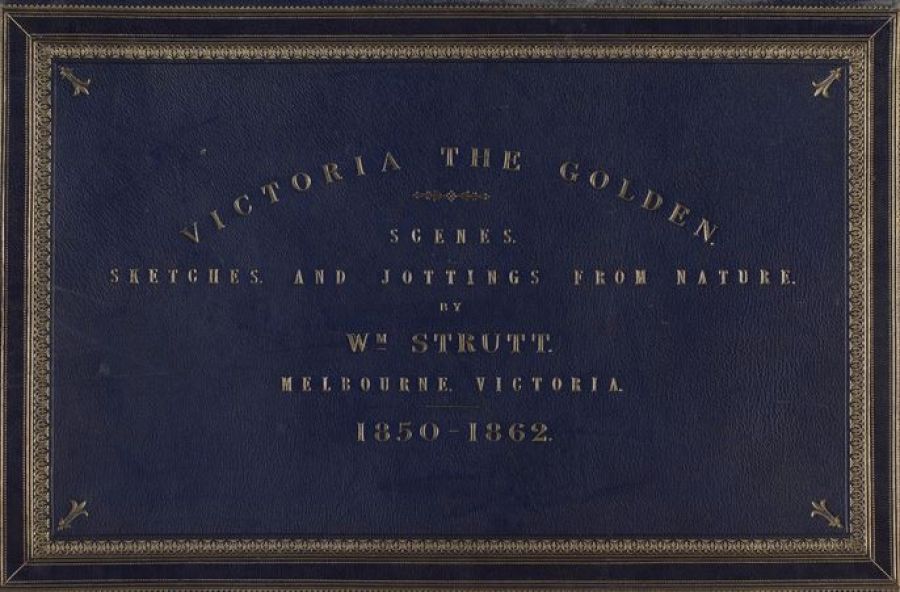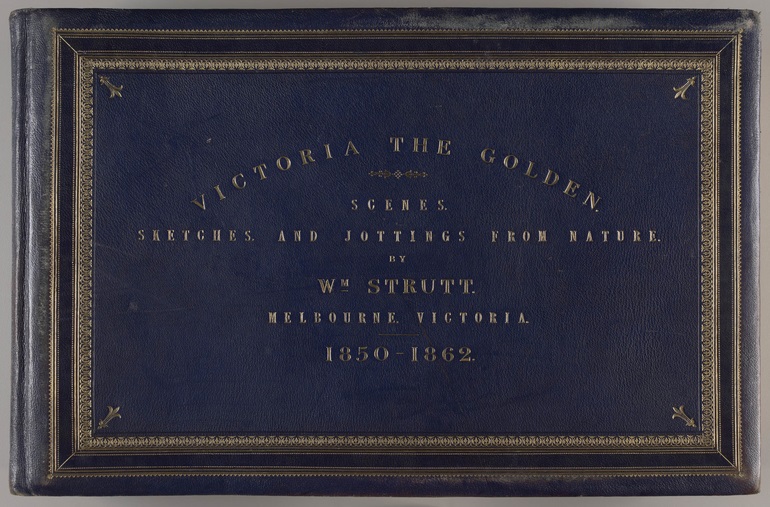
- Free Article: No
- Review Article: Yes
- Article Title: Golden State
- Online Only: No
- Custom Highlight Text:
In 1907, the Premier of Victoria, the Honourable (later Sir) Thomas Bent, purchased for 120 pounds from the artist in England Victoria The Golden, scenes, sketches and jottings from nature, by William Strutt, Melbourne, Victoria, 1850-1862, described by the Hon. F.S. Grimwade in his preface as the greatest treasure in the Library of the Parliament of Victoria. The Library Committee of 1909, on accepting the gift, minuted the note that ‘The Librarian was to acquire a suitable safe in which to keep the volume’.
- Book 1 Title: Victoria The Golden
- Book 1 Biblio: Victorian Government Printing Office $34.95 pb,
- Book 1 Cover Small (400 x 600):

- Book 1 Cover (800 x 1200):

For over half a century scholars and art historians have made the pilgrimage to the top of Collins Street after securing the necessary permission to have the treasure brought out for inspection. At long last the album has been published and its contents now have the chance of exerting the influence on the vision of Australia that the artist so fondly hoped for.
William Strutt is chiefly famous in Australia for the ‘Bushrangers on St. Kilda Road’, exhibited at the Royal Academy in 1887, purchased from the family by the late Sir Russell Grimwade and included in his great benefaction to the University of Melbourne. Like most of Strutt’s highly finished work, it lends itself to colour reproduction and by this means has become widely known, particularly in schools.
Why should a sketch album, made up of forty-three folios, the drawings on which are here reproduced on one hundred plates, be Strutt’s greatest achievement, and his chief claim to the notice of posterity?
The artist was twenty-five when he came to Australia in 1850, thirty-two when he left. He was technically mature and at the peak of his receptiveness. He had a high sense of the mission he conceived when his health, the cause of his journey, recovered. This was to record the epic first steps of a colony established on a vast continent only partially explored. His audience was to be the mother country and his medium the oil paintings he proposed to paint for exhibition at the Royal Academy from the materials he had collected while in Australia.
The project failed, despite the success of the first of his oil paintings, ‘Black Thursday’, exhibited at the Royal Academy in 1864 and creating such a sensation that it was reexhibited the same year at the Crystal Palace and awarded a gold medal. It was followed by only two others over a span of a quarter-century, the third being the ‘Bushrangers’, although he completed the ‘Death of Burke’ in 1910, five years before his death.
Failing to get patrons or buyers to finance the oil paintings, he started to execute in watercolour his designs for the arresting and sometimes grandiose works of the epic series he was forced to abandon. These watercolours will surely have the impact of a revelation. Strutt has always been highly rated as a draughtsman and his drawings and watercolour sketches have been avidly sought after by collectors. Their technical excellence will not come as a surprise. The revelation will be such masterpieces as ‘Black Troops escorting a prisoner from Ballarat to Melbourne, 1851’. Although only a watercolour sketch for a painting, it deserves to become one of the five or six best known pictures in the history of Australian art. An ironic reversal of the usual relationship between the aborigine and settler, it depicts noble savages in military uniform conducting a white prisoner in chains to sentence and gaol. What Blakean imaginings haunted this realist painter when he invested a moment of vision with such tremendous psychological undertones?
Strutt collected in his album not only his ‘designs’ for oil paintings, including the few he actually painted, but ‘some very slight jottings’ and ‘the slenderest outlines’, wherever he thought their rapidity a source of authenticity. The drawings, he further tells us, were made on the spot, ‘as records of what we may now look upon as the dim past, in the rapidly progressive history of Victoria’. In fact most of the sketches in the album were done from life, and if the water-colour designs for large compositions were executed later in England, he used the innumerable ad vivum sketches from which the album is selected. Briefly, his priorities for the epic task were pioneers and pioneer buildings; the lawmakers and the early days of Parliament; military and the aborigines enrolled in the ‘Black Troops’; the discovery of gold and the explorations of Burke and Wills. No other artist in the history of the colony had such close personal relations with Parliament and the judiciary. As a figure and portrait painter with landscape skills he stands out from the landscapists of the period, and he is certainly the only one to have conceived for himself the role of history painter of Australia.
The narrative and explanatory text by Marjorie Tipping is learned, authoritative and, what is not always found in combination with these virtues, delightful to read. Why is it that historians of the fair sex wear their learning more lightly than their male counterparts? She excels in evoking background and atmosphere by the vivid visual image and the felicitous quotation, always precise, relevant and clear.
The brilliant designer of the book is Bruce Weatherhead. The standard of colour reproduction is excellent, indeed the whole is a minor masterpiece of book design, and $400 for the Collectors’ Edition is not excessive. At $34.95 for the Standard Edition in a cloth binding this must rank as an outstanding example of a large Government subsidy being justified.


Comments powered by CComment